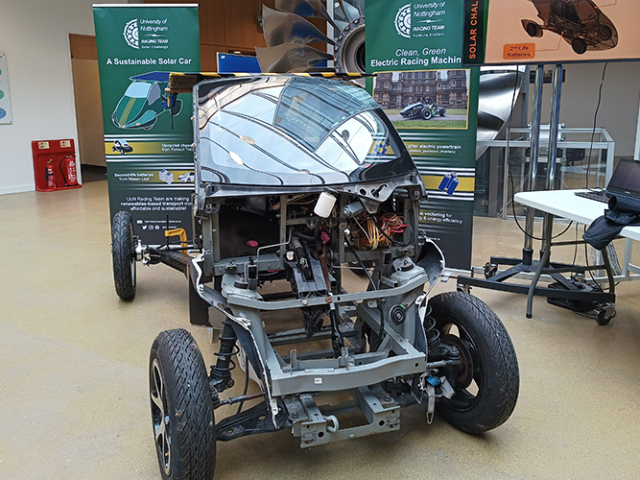There can be no doubt that technology has advanced significantly in the last few years, yet despite all these steps forward women remain underrepresented in the science, technology, engineering and maths (STEM) workforce. While we have seen an increase over the past decade to improve these statistics, as of 2021, women still make up just 16.5% of engineers in the UK. Katie Collins, Human Resources Director, Redcentric discusses.
This isn’t the only issue. The skills gap reveals the lack of trained workers for upcoming technology-focused jobs and is raising concerns in a number of industries. Many believe that targeting students at grassroots level to raise awareness of tech and data-related roles is one solution. This includes placing a greater emphasis on careers that focus on skills in STEM subjects.
These challenges are by no means new, so what are Managed Service Providers (MSPs) doing to encourage the next generation and those who haven’t previously considered STEM roles to get involved in its future?
MSPs made the news back in 2019 when Holyrood’s Education and Skills Committee launched an inquiry into the importance of STEM subjects for children aged three to seven. Discussions for this age group influences and broadens horizons to future careers, and with rapid advancements in tech, the next generation is needed to invent, create, and maintain these new technologies.
How can MSPs attract the next generation of workers?
In order to attract the next generation of workers, it is vital that organisations are using the appropriate channels to get them through the doors. The likes of TikTok and Instagram are already proving to be engaging ways of recruiting, and allow recruiters to cast their search wider than the traditional ‘post and pray’ methods.
Working in partnership with local schools and communities, as well as supporting a variety of apprenticeship programmes, also ensures there is a continual review of benefits and working practices in place to attract the younger generation.
By focusing on building equal representation through targeted recruitment, an increase in apprenticeship programmes and internal development can build a longer-term pipeline. MSPs and wider organisations can be confident that this investment in development and progression will lead to more opportunities in the future.
Apprentice programmes differ across each area of a business for both new joiners and existing colleagues. These programmes provide a pipeline of talent for customer services, finance, procurement, project management and engineering roles by working more closely with local schools and apprentice providers.
However, the work doesn’t stop there as organisations need to work hard to retain the talented individuals they recruit. This means a continued focus on wellbeing strategies, organisational values and support for the younger generation through coaching and mentoring programmes, creating a passion for innovation and future ways of working.
Why is diversity in STEM careers important?
What we have learned in the last few years is that there is talent everywhere, and we need to open the process up to those that might not previously have been considered.
This means attracting fresh talent from our local communities to get the best mix of ideas and expertise for the role. By recruiting a wide range of personalities, it creates role models within the business, and as the saying goes ‘you can’t be what you can’t see’.
Equal opportunities in employment and ensuring that individuals are valued eliminates discrimination so that no one receives less favourable treatment or is disadvantaged. Every possible step must be taken to ensure that individuals are treated equally and fairly and that decisions on recruitment, selection and opportunities for training and promotion are based solely on objective and job-related criteria.
In order for businesses to get people excited about roles in STEM industries, early years engagement is crucial, and involves getting speakers and initiatives into schools. For example, practical applications and case studies, visibility of career path, pitching appropriately and work experience programmes are all great ways to get students engaged. We implement this through our ‘Redcentric Set Go’ scheme.
Implementing a skills matrix within the organisation via skills assessments and apprenticeships can offer a skills-based approach to hiring and developing future talent. This enables those hiring to focus on practical skills rather than purely academic qualifications.
How can a grassroots approach tackle the digital skills gap?
This can be achieved by growing a pipeline of future talent across all areas, talent pooling and encouraging local communities to engage with the digital future of businesses. With home grown talent having the opportunity to be part of an organisation’s journey, it will also enable them to have the chance to directly impact and support the experience customers receive.
Introducing children to STEM subjects at an early age can go a long way towards bridging the skills gap. Introduction in early childhood is fundamental to development and essential for learning, and interest in digital skills is a step in the right direction.
To truly tackle the issue, we must first look into what’s behind the low number of graduates entering STEM occupations, and we need to trace this lack of passion for STEM subjects back to the earliest level.
We also encourage industry role models, who are important to show the younger generation what their career path could look like. This can be showcased through case studies, keynote speakers and current leaders in the organisation making the time to engage with potential future leaders to coach and mentor them on an ongoing basis.




